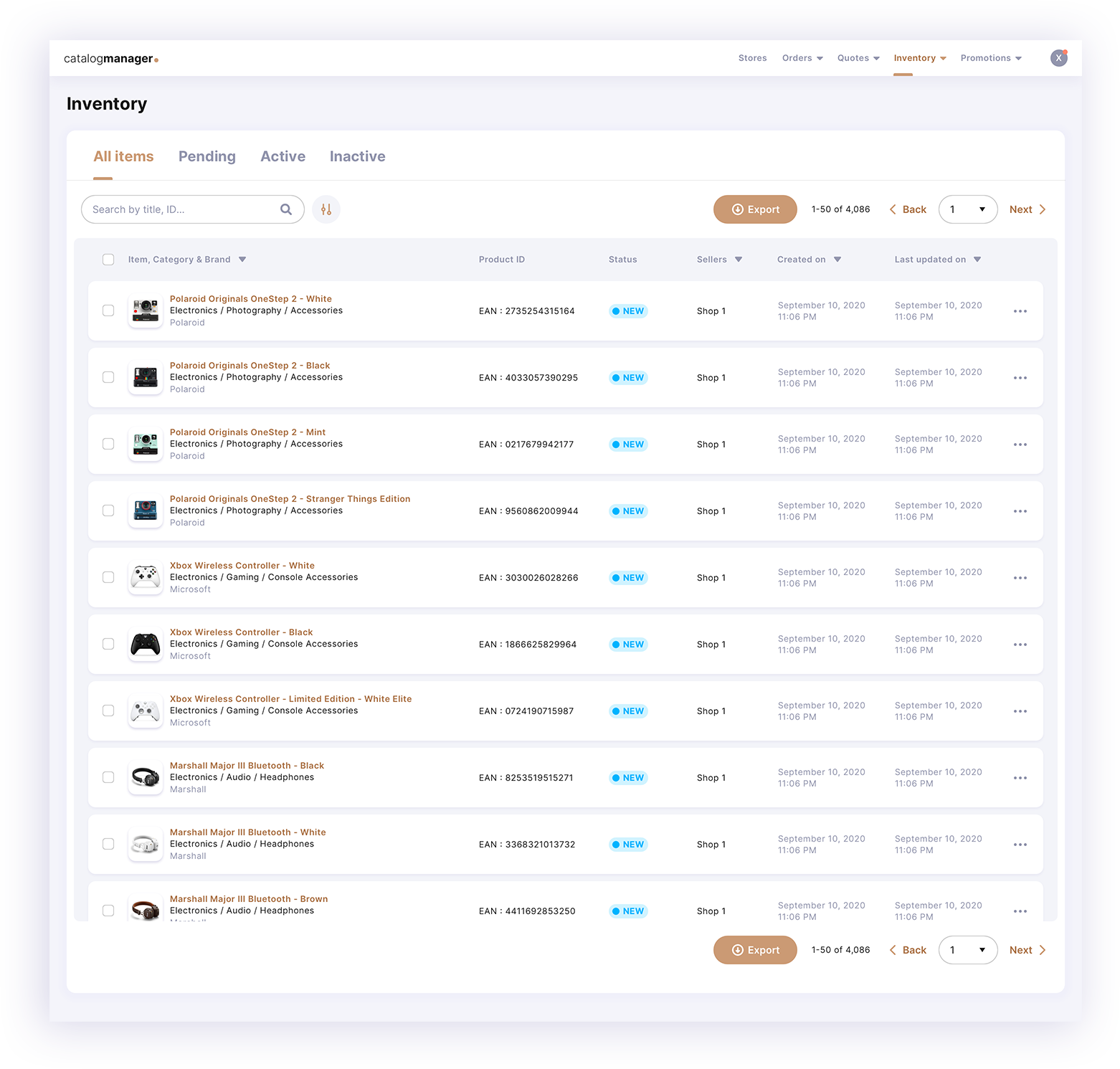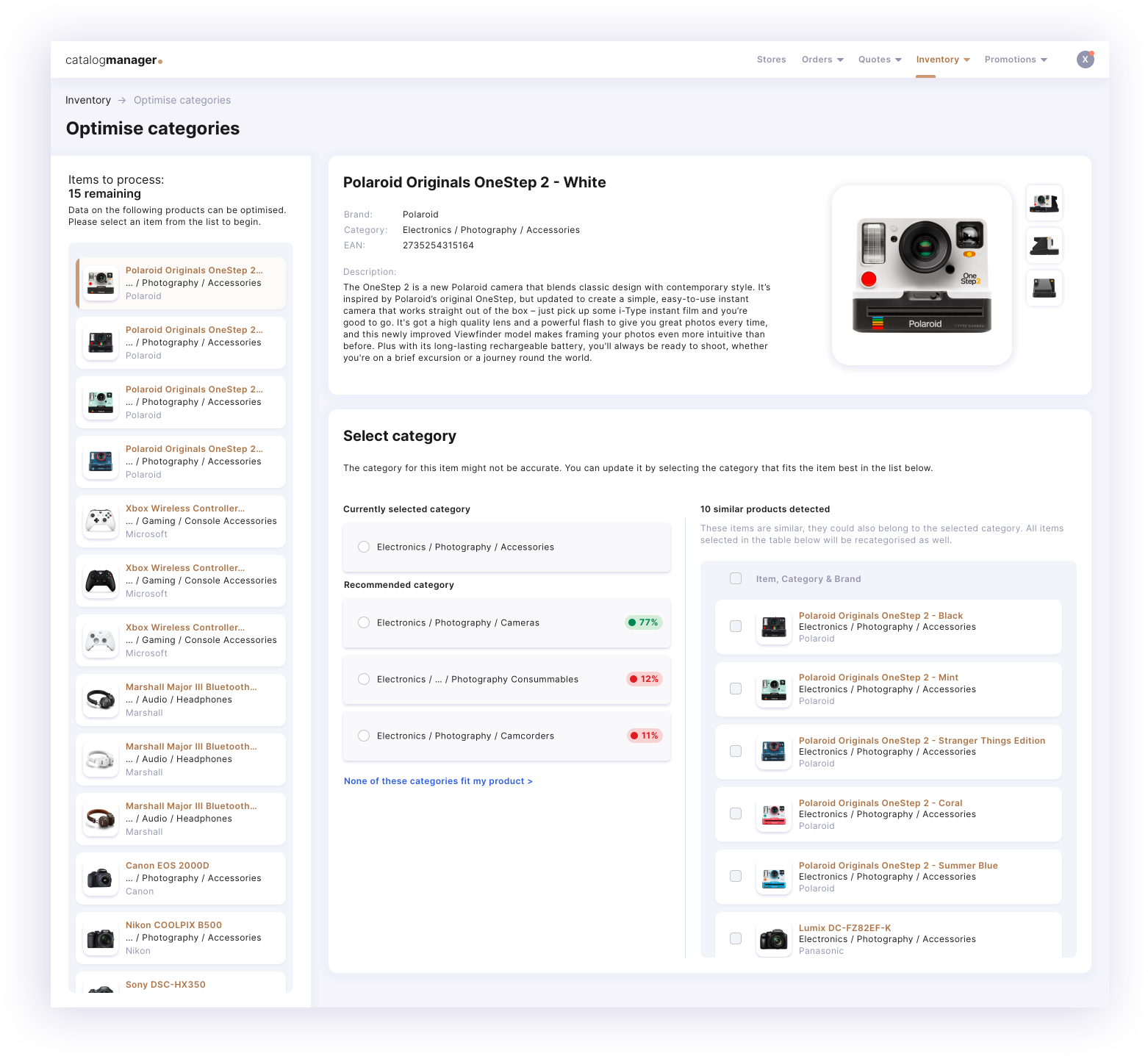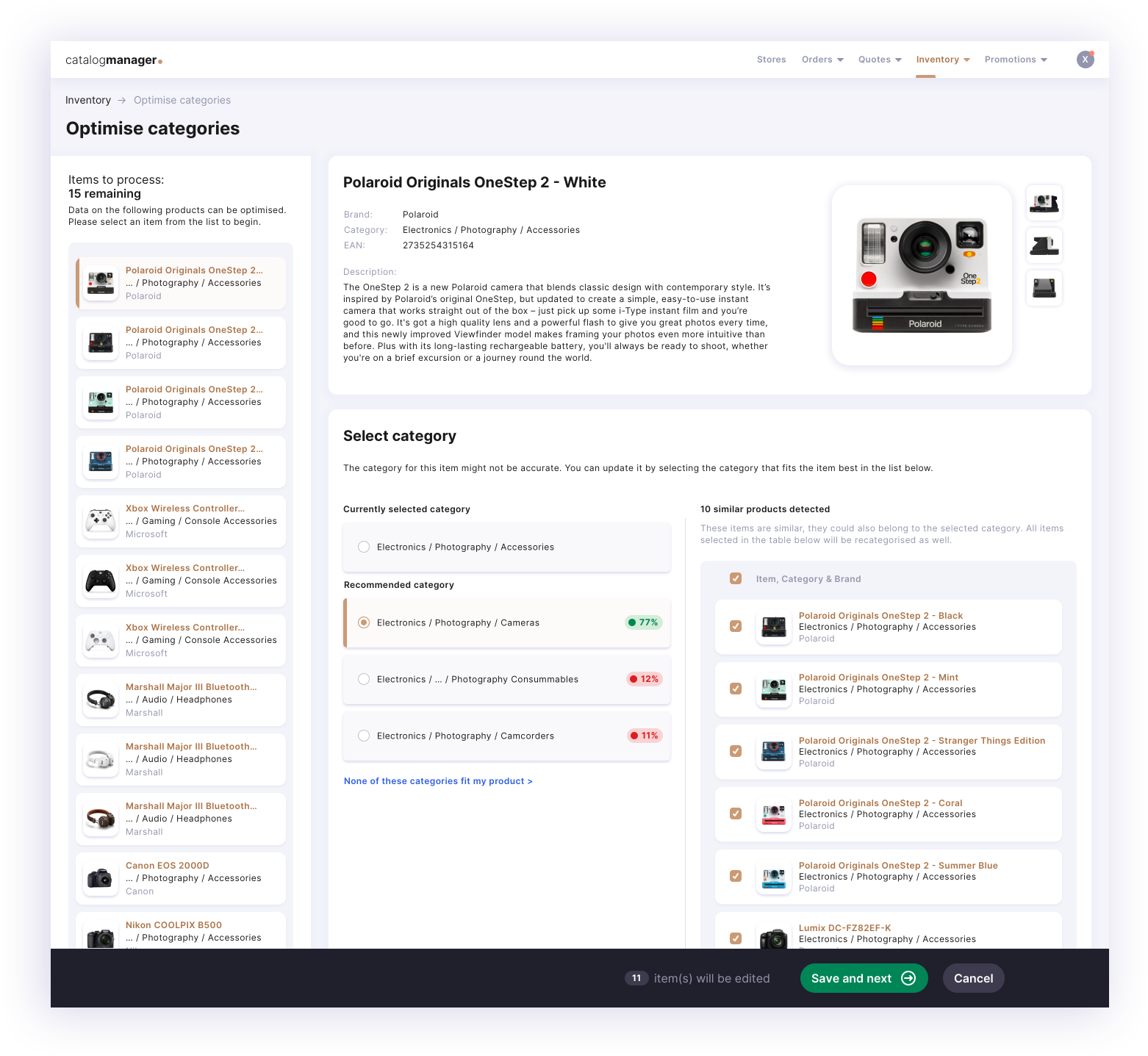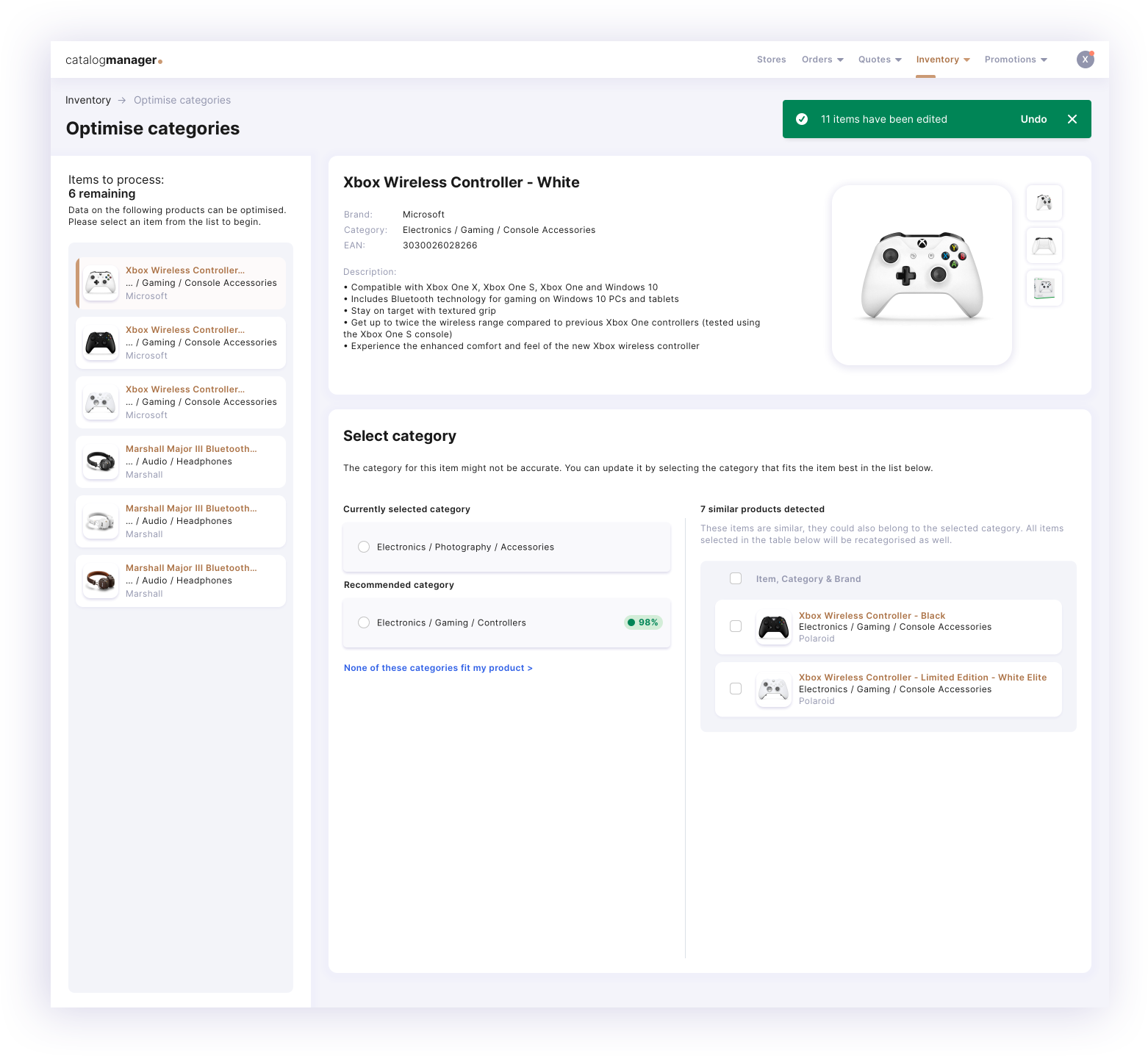Context
Marketplaces have proven to be a thriving business model in the last decade, being almost always more profitable than traditional linear flow business models. A marketplace is any selling platform online that has more than one seller. Think Amazon, Uber, Alibaba.
More and more big brands are naturally choosing to make the transition to hosting a marketplace on their e-commerce website. That implies letting third party sellers register and sell their products on a website that isn’t theirs. That makes it logistical chaos, but also a fun challenge for a designer to tackle.
CatalogManager is a back-office interface that allows e-commerce platforms to manage their inventory, and for marketplace owners to manage their partnered sellers, and the products that they sell.





